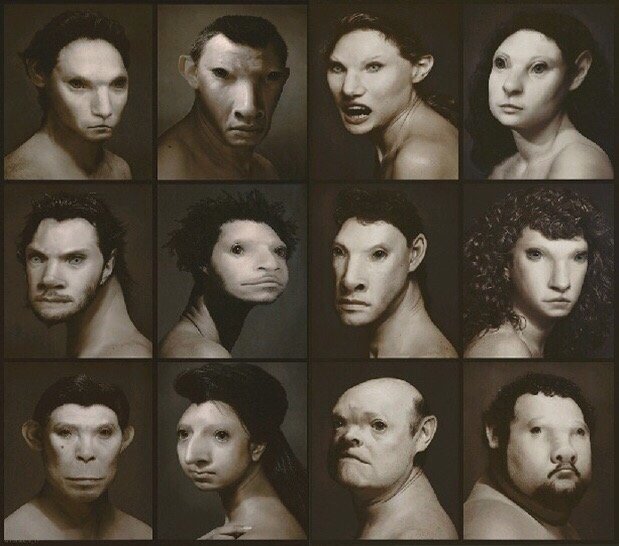Krasnoyarsk Biennale: international art forum in Siberia

Zadok Ben-David. People I Saw But Never Met. 2019
Russia’s oldest biennale takes place half a world away from its capital, on the border between Europe and Asia, and has a former Lenin museum for a central hub.
The Siberian city of Krasnoyarsk literally stands in the middle of Russia, on the border between the European and Asian halves of the world’s largest country. It is that industrial hub which has since 1995 hosted Russia’s oldest biennale.
Created by a small group of architects who were restoring and converting what had originally been built as the Soviet Union’s 13th Lenin museum, the Krasnoyarsk Museum Biennale initially focused on ethnographical exhibitions. However, contemporary art secured a foothold after the Millennium and is now the dominant attraction of the biennale. As an industrial city, Krasnoyarsk is full of startling examples of brutalist architecture all the way from the opera house to the Cheryomushki district on the Right bank of the Yenisey River, one of the world’s longest.The form of the ex-Lenin museum on Peace Square resembles the snout-shaped bows of the barges cruising along the river below it. The event’s format is always a celebration of art with a multiplicity of events around the city, united by a single broad theme.
For instance, the special project of the 12th biennale, curated by Simon Mraz, director of the Austrian Cultural Forum in Moscow, focused on “an artistic discovery of the Russian village.” It explored how artists imagine villages, thus creating a poignant contrast with the urban landscape surrounding the museum.
The theme of the 13th biennale, which opens on September 5, is “Negotiators,” reflecting the tensions between the artists’ visions and local contexts.It will expand outside the bounds of the city centre to the Stolby (Columns) nature reserve. There and all over the city architects and poets will take part in a project called “Decelerated Movement," which will take shape of a tent camp. The city residents will be able to enter it in order to discuss urgent issues of urban development. The main exhibit in the Peace Square museum will be “Open Boundaries,” curated by Vladimir Seleznyov (b. 1973), who won the state-run Innovation award for Artist of the Year in 2019. The works will be inspired by the local Krasnoyarsk context, but the exhibition participants will not be locals.
“The artists in this case act as ‘mediators’ between the space or the local inhabitants and the viewer,” is the curator’s explanation. This will probably allow the city’s locals to view their homes in a different way. An “After Pozdeev” exhibition, put together by young curators Oksana Budulak and Sasha Semenova, will explore the history of contemporary art in Krasnoyarsk during the last twenty years, after the death of the city’s best-known artist Andrey Pozdeev (1926-1998).
The central installation of the biennale “People I Saw But Never Met,” by Israeli artist Zadok Ben-David (b. 1949), will focus on a more global aspect of negotiations, the importance of dialogue in our complex world. It will bring people together from different places and put their different-scaled figures in a “global village,” where they will need to negotiate their common space. (Does that sound familiar?)
That exhibit will be curated by architect Sergey Kovalevsky, who has been the Krasnoyarsk biennale’s curator since its inception.
13th Krasnoyarsk Museum Biennale. Negotiators
Krasnoyarsk, Russia
5 September 2019 – 2 February 2020








